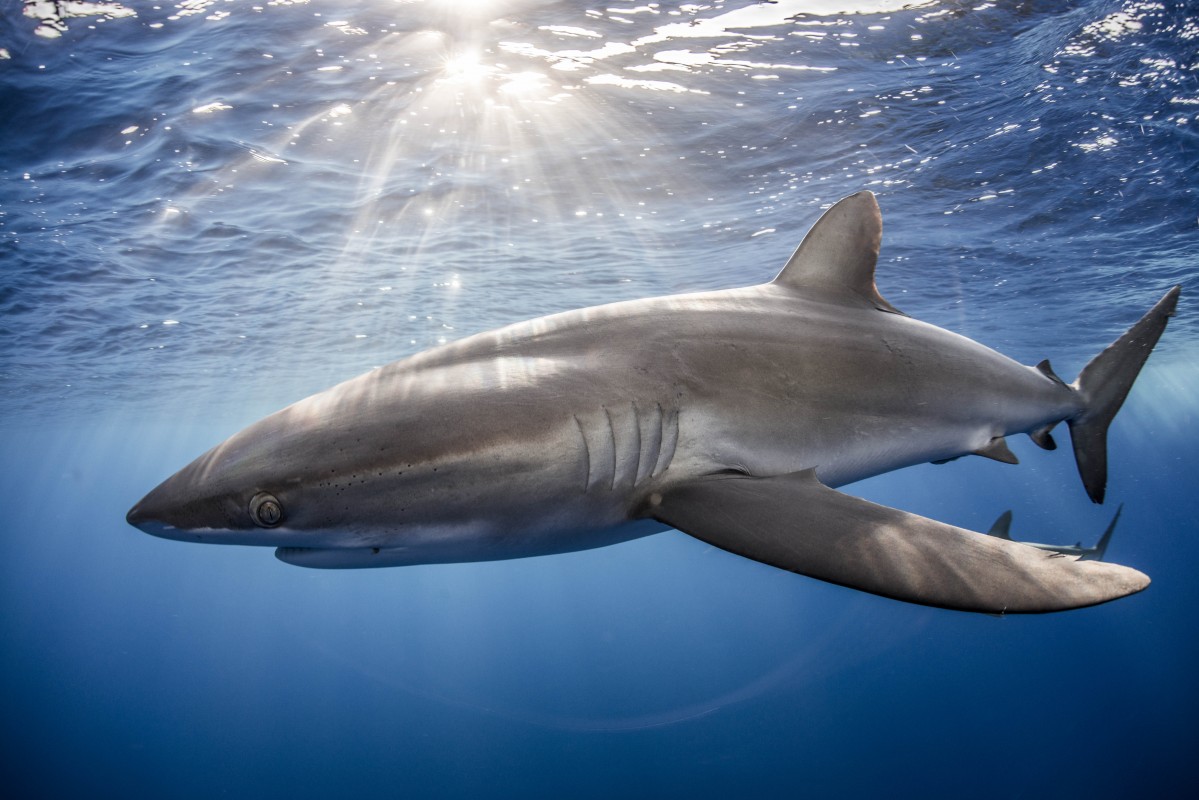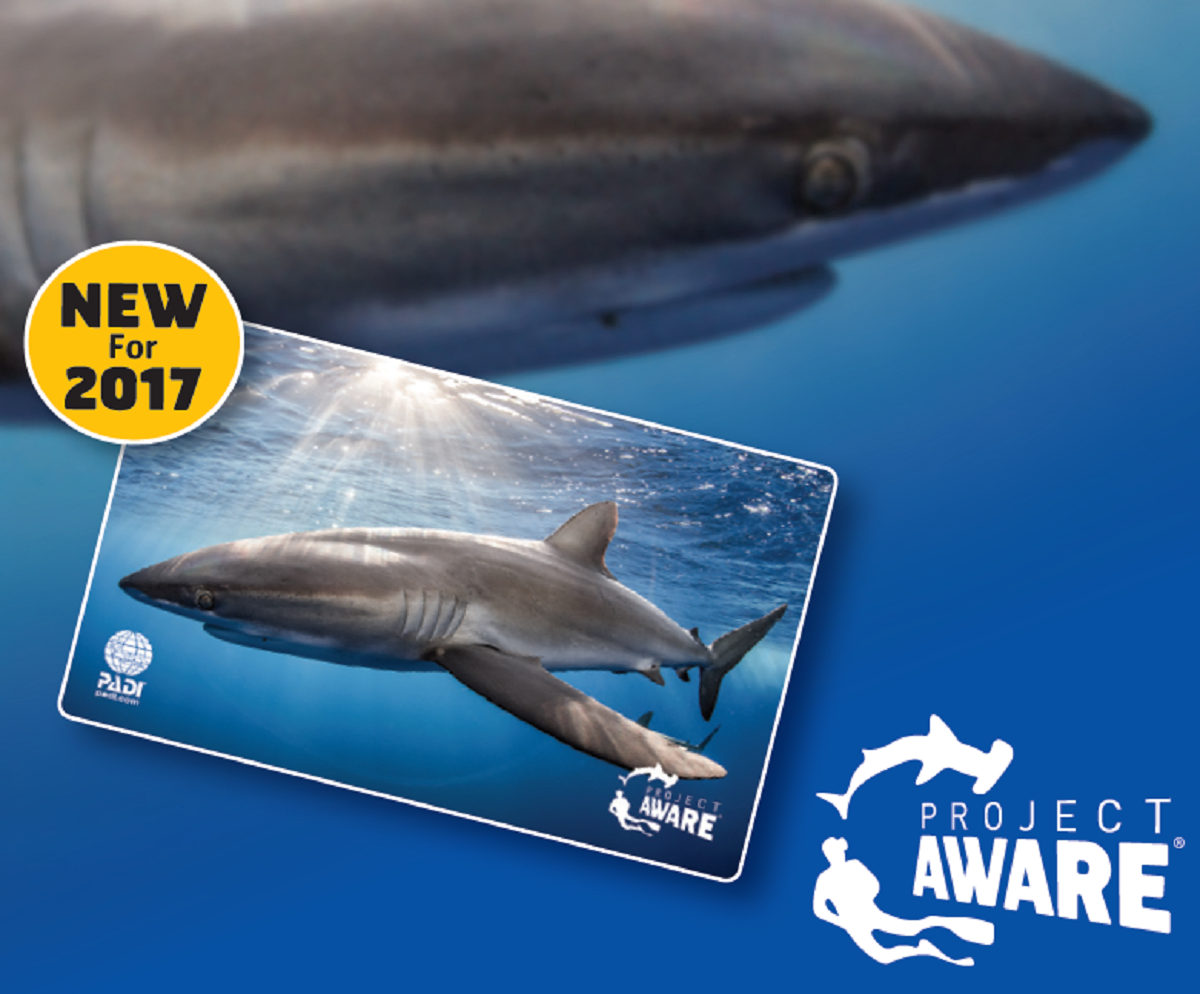Spotlight on the Silky Shark
2017 Limited Edition Diver Certification Card Features New CITES-Listed Shark Species

Just a few months ago, over 150 countries gathered to attend the 17th meeting of the Conference of the Parties to the Convention on International Trade in Endangered Species of Wild Fauna and Flora (CITES CoP17). The silky shark was one of the 13 shark and ray species up for consideration for Appendix-II listing. An Appendix-II listing under CITES is designed to ensure that commercial international trade is strictly regulated to ensure its sustainability, legality and traceability for the long-term survival of the species in the wild.
Project AWARE®, together with shark conservation partners, successfully advocated for the adoption of international trade controls proposed by top diving destinations Fiji, Sri Lanka and the Maldives under CITES not only for the silky shark but also thresher sharks and nine species of devil rays.
As a New Year begins, let’s pause to celebrate the progress made for sharks and rays in 2016. See how you can take action for shark and ray protection in 2017 and learn more about the majestic silky shark:
How to Support Shark and Ray Conservation in 2017
 Support from the dive community is critical to support Project AWARE’s work and deliver strong science-based arguments to decision makers in support of vulnerable and highly traded shark species like the silky shark.
Support from the dive community is critical to support Project AWARE’s work and deliver strong science-based arguments to decision makers in support of vulnerable and highly traded shark species like the silky shark.
Celebrate the new international trade controls for the silky shark and show off your support for shark and ray conservation with the new PADI® Silky Shark limited edition card supporting Project AWARE’s conservation work. If you complete a dive course in 2017, ask your PADI Instructor for this special limited edition Project AWARE version of your PADI certification card or if you can’t wait to show off your support for ocean protection, visit www.padi.com to request a replacement card.
Silky Shark Facts
- The silky shark, a sleek, pelagic species found in tropical waters around the globe, gets its common name from its exceptionally smooth skin, which has an almost metallic tone.
- This highly migratory, low productivity shark is at risk from substantial incidental take in high seas fisheries. Due to its beautifully marked skin, the silky shark is a popular target for the shark leather trade. Like many other sharks, it is also fished for its fins, meat and liver oil. The silky shark is ranked among the top three most important sharks in the global fin trade.
- Silky sharks are among the shark species most commonly captured in pelagic longline and purse seine gear set primarily for tunas; the associated mortality is the primary threat to silky shark populations. They are vulnerable to overfishing due to slow growth, late maturity, lengthy gestation, and few young. They can grow to more than three meters and live 20 years.
- Silky sharks are popular with divers and snorkelers in many places, including Cocos Island, Cabo San Lucas, the Florida Keys, and several parts of the Caribbean. Top places to encounter Silky sharks whilst diving include USA (Texas), Mexico, Costa Rica, The Bahamas, Cuba, Ecuador, Sudan.
- The silky shark is classified as Near Threatened on the International Union for Conservation of Nature (IUCN) Red List of Threatened Species™.
International Trade Controls for Silky Sharks
From the date the CITES CoP17 shark proposals were formally adopted in October 2016, CITES Parties have one year to implement the new international trade obligations for the silky and thresher sharks, and six months for the devil rays.
CITES Trade Controls are:
- Helpful for improving data on fisheries and trade
- Complementary to national, regional, and global conservation commitments
- Beneficial in preventing depletion and associated negative effects on ecosystems and economies
While CITES has helped to protect myriad terrestrial species, the effort to list sharks and rays is still relatively new ground, resulting in difficult battles. Shark species only began to be listed in the CITES Appendices in 2003 and even though more species have been included over the years, to date, only 31 are listed in the CITES Appendices.
In our work to end overexploitation of sharks, we advocate for national, regional, and global conservation actions that limit catch based on science and the precautionary approach, end at-sea removal of fins and fully protect species listed by the IUCN as Endangered or Critically Endangered.
In 2017, be an agent of positive change for the ocean. Support ocean protection with your PADI certification to help fuel our critical shark and ray conservation work. Together, we're creating a global culture that nurtures and sustains a thriving, vibrant ocean.



